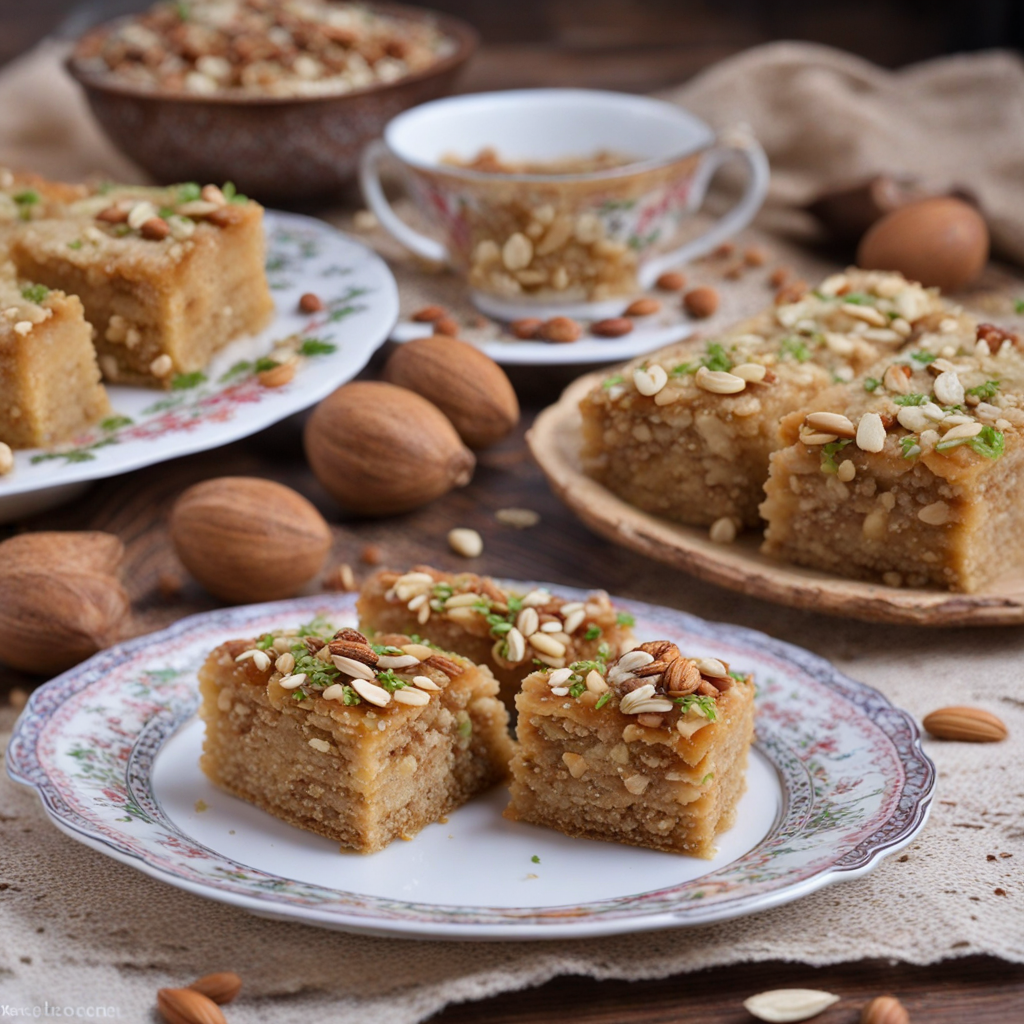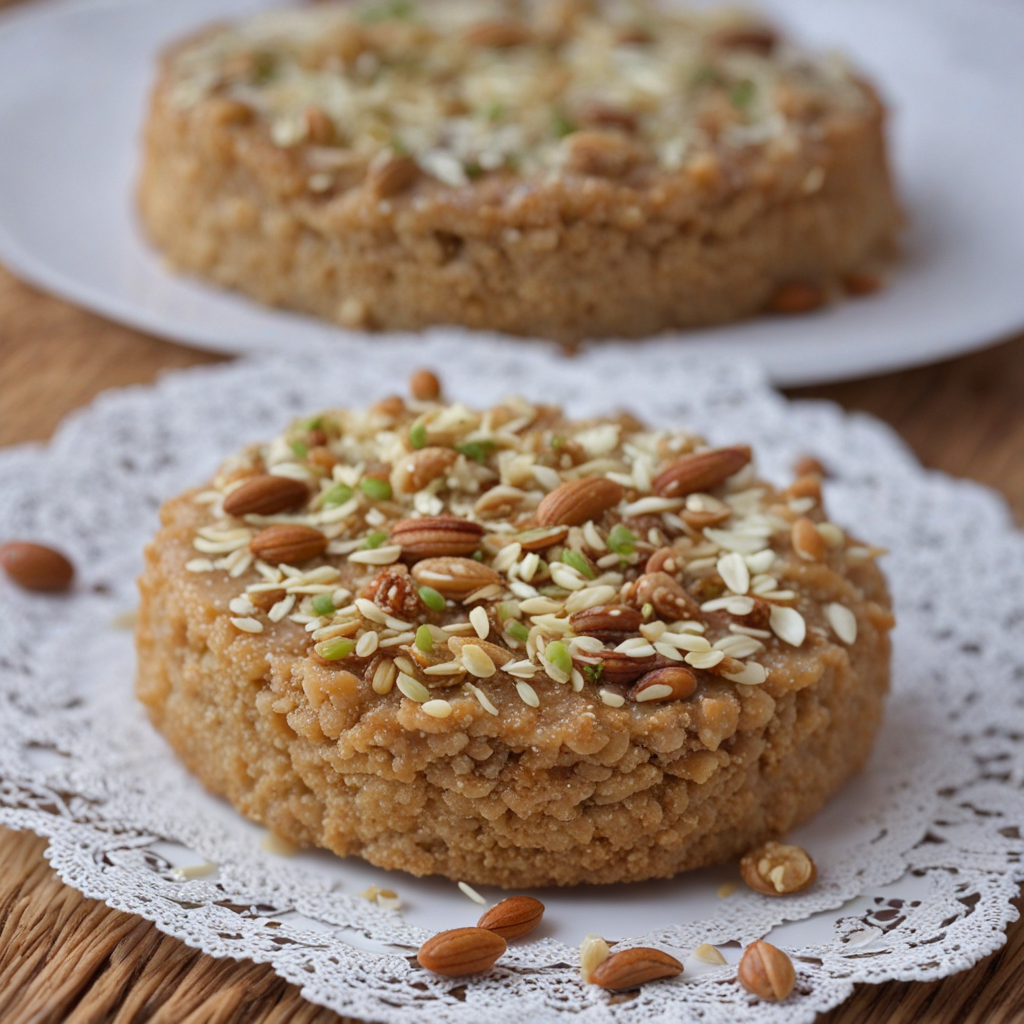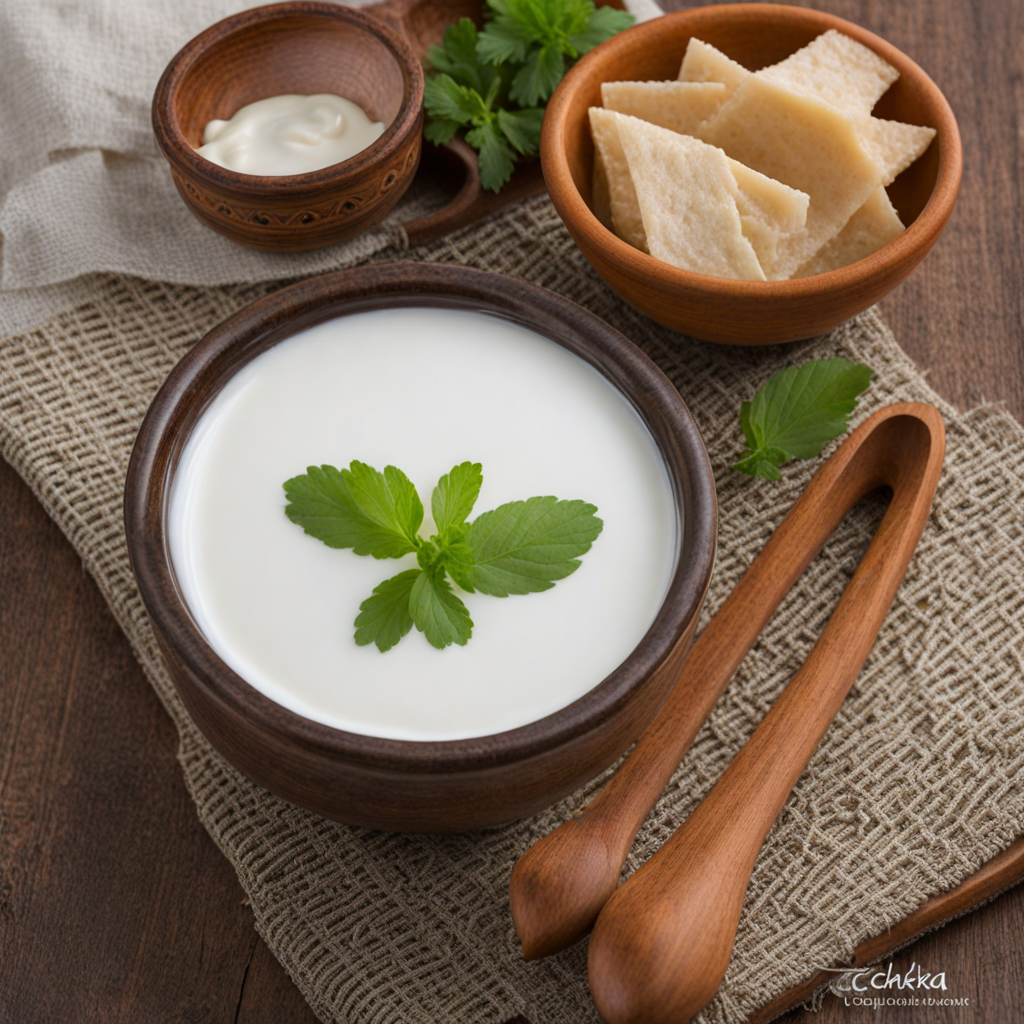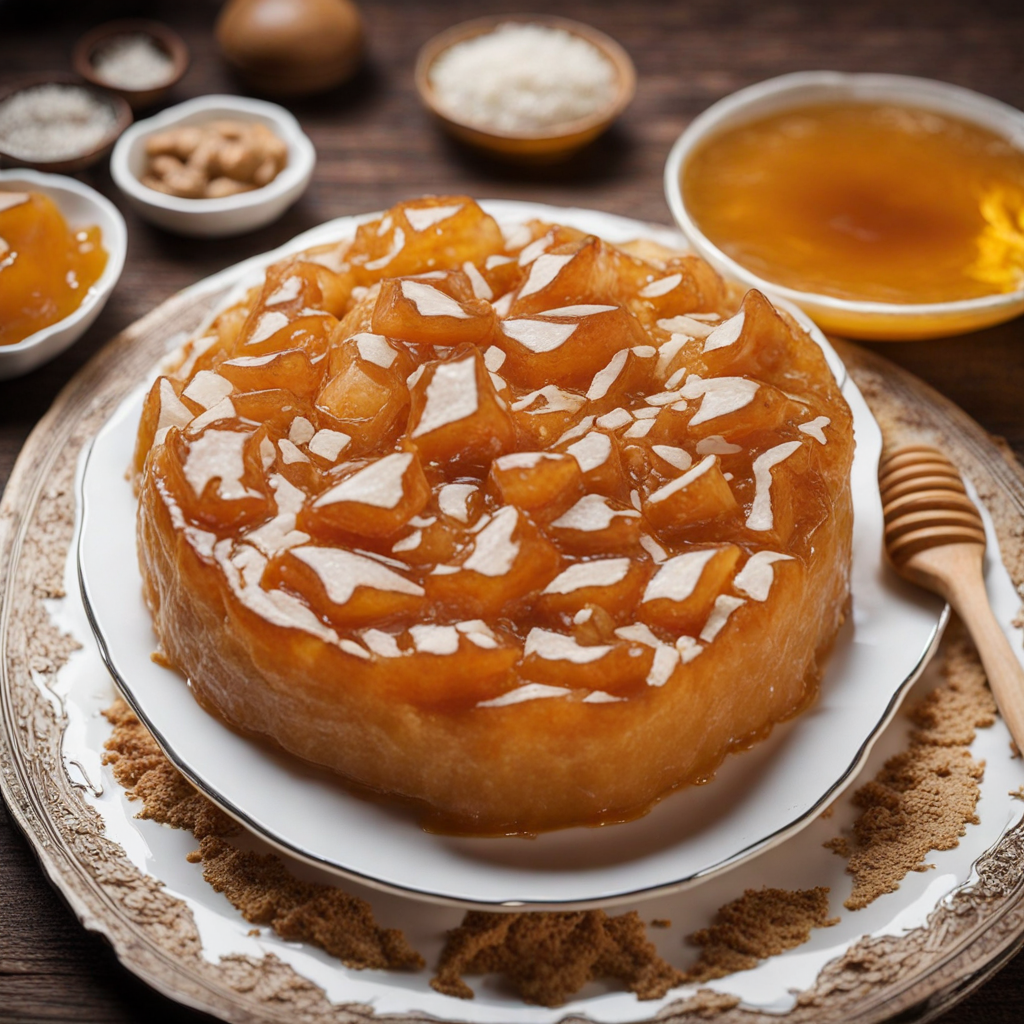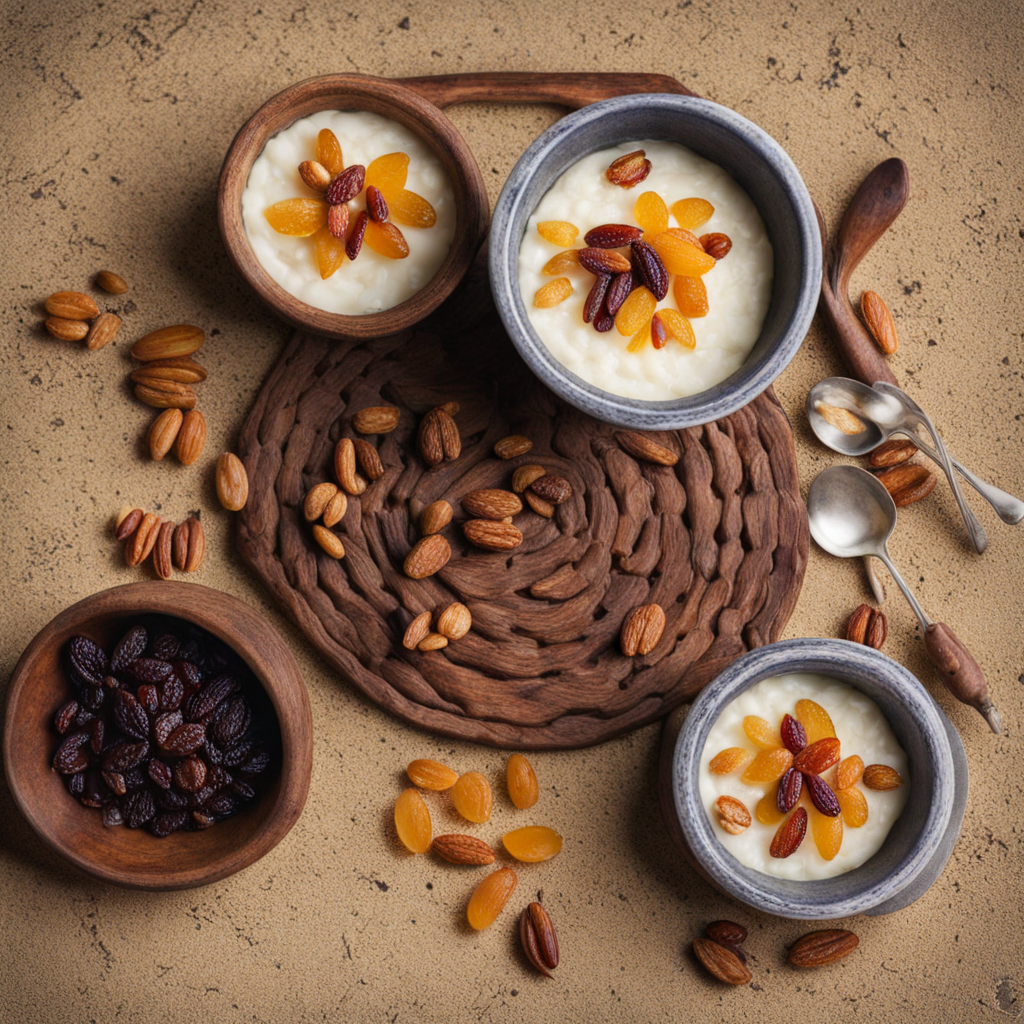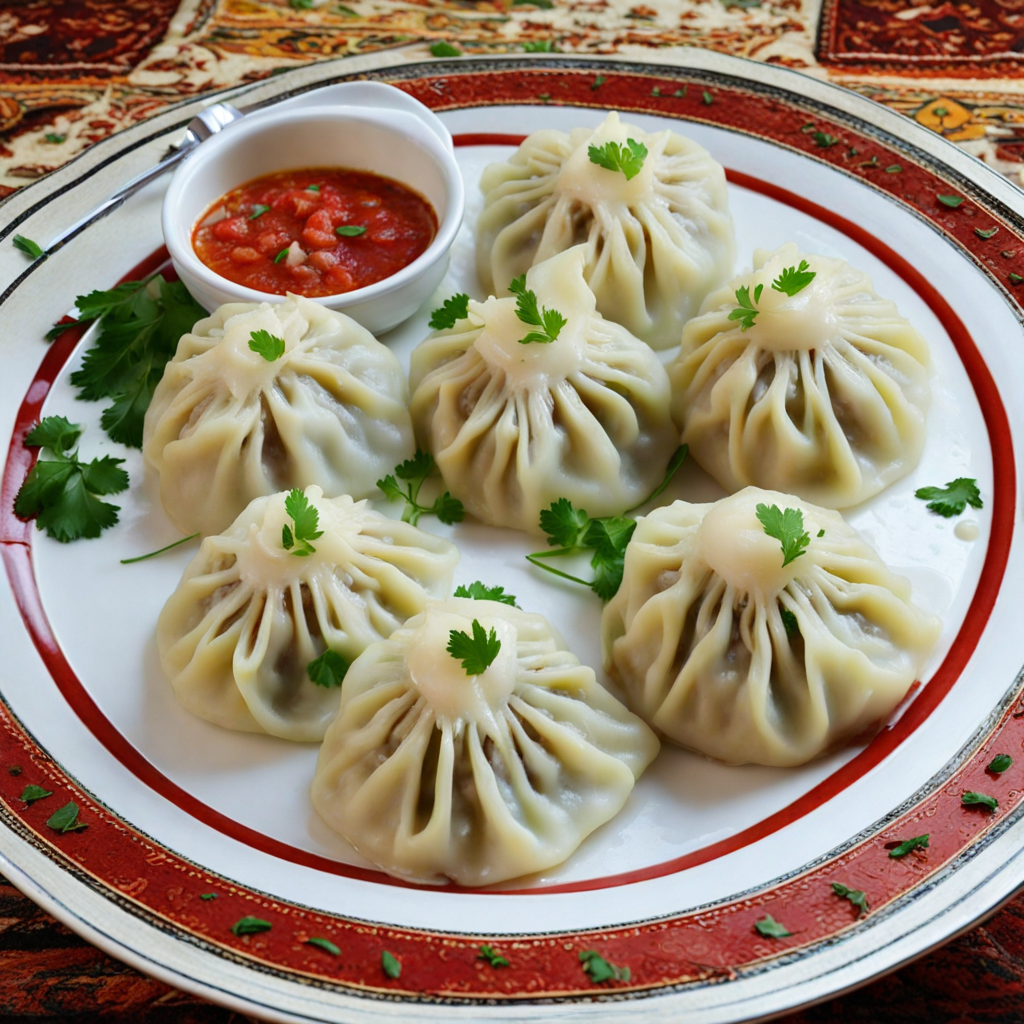Halvaitar
Halvaitar is a delightful and unique dessert hailing from the picturesque country of Tajikistan. This sweet treat is a harmonious blend of flavors and textures, primarily made from finely ground nuts, sugar, and aromatic spices. The nuts, often walnuts or almonds, are roasted to perfection, enhancing their natural oils and providing a rich, nutty flavor that serves as the foundation of this dish. The addition of sugar creates a syrupy consistency that binds the ingredients together, while spices like cardamom and cinnamon add warmth and depth, making each bite a flavorful experience. Traditionally, Halvaitar is shaped into small, bite-sized pieces that are easy to share and enjoy during festive occasions or family gatherings. Its texture is both creamy and crumbly, offering a delightful contrast as it melts in your mouth. The dessert is often garnished with a dusting of powdered sugar or crushed nuts, which not only enhances its visual appeal but also contributes to the overall taste, providing a satisfying crunch that balances the softness of the halva. What makes Halvaitar particularly special is its ability to evoke the rich cultural heritage of Tajikistan. Each bite tells a story of tradition and communal celebration, as it is typically prepared for special events and gatherings. For those adventurous enough to explore new culinary horizons, Halvaitar presents an opportunity to experience a taste of Tajikistan that is both exotic and comforting, leaving a lasting impression on the palate and the heart.
How It Became This Dish
The History of Халваитар: A Sweet Symbol of Tajik Culture #### Origins Халваитар (Halvaitar) is a traditional sweet confection that holds a significant place in the culinary heritage of Tajikistan. Its roots can be traced back to the ancient Silk Road, a network of trade routes that connected the East and West. The ingredients and methods used to create Halvaitar are reflective of the cultural exchanges that occurred along these routes, where Persian, Central Asian, and later Russian influences melded together. The fundamental component of Halvaitar is sesame seeds, which have been cultivated in the region for thousands of years. The importance of sesame in Tajik cuisine cannot be overstated; it is not only a source of nutrition but also a symbol of prosperity and good fortune. The word "halva" itself has Arabic origins, meaning "sweet," and has been adapted across cultures to refer to various types of confections. In Tajikistan, Halvaitar is a distinct variation that showcases local ingredients and flavors. #### Cultural Significance Halvaitar is more than just a treat; it is a symbol of hospitality and celebration in Tajik culture. It is often prepared for significant occasions such as weddings, religious holidays, and family gatherings. The process of making Halvaitar is often communal, with family members and friends coming together to create the sweet, reinforcing social bonds and traditions. In Tajik society, offering sweets to guests is a gesture of respect and warmth. Halvaitar, with its rich flavor and appealing texture, serves as a perfect ambassador of Tajik hospitality. The act of sharing Halvaitar embodies the cultural values of generosity and community, making it a staple in festive gatherings and an integral part of the Tajik identity. #### Ingredients and Preparation Traditional Halvaitar is made from a combination of ground sesame seeds, sugar, and occasionally other nuts or dried fruits. The preparation involves toasting the sesame seeds to enhance their flavor before grinding them into a fine paste. This paste is then mixed with sugar and shaped into molds or pressed into flat cakes. The resulting confection has a crumbly texture and a rich, nutty taste, often garnished with pistachios or almonds for added flavor and visual appeal. Over time, various regional adaptations have emerged, incorporating local ingredients like honey, dried fruits, and spices. For instance, in some areas of Tajikistan, Halvaitar might be infused with cardamom or saffron, reflecting the diverse agricultural bounty of the region. This adaptability highlights the creativity of Tajik cooks and the influence of surrounding cultures. #### The Evolution of Halvaitar As Tajikistan underwent significant political and social changes throughout the 20th century, so too did the culinary landscape, including Halvaitar. During the Soviet era, food production and distribution systems transformed, leading to increased commercialization of traditional foods. While Halvaitar remained a beloved treat, it began to see variations that incorporated more widely available ingredients, such as margarine instead of traditional oils, or the addition of artificial flavorings. In recent years, there has been a resurgence of interest in traditional foods, driven by a broader movement to preserve cultural heritage. Many Tajiks have begun to return to traditional recipes and methods of preparation, seeking to reconnect with their culinary roots. This revival has led to a renewed appreciation for Halvaitar, with artisanal producers emerging who focus on quality ingredients and authentic preparation methods. #### Halvaitar in Contemporary Tajikistan Today, Halvaitar is ubiquitous in Tajik markets and bakeries, celebrated both for its taste and its cultural significance. It is commonly found during festive seasons, particularly during the Persian New Year (Nowruz), which marks the arrival of spring and new beginnings. The sweet is often included in the spread of traditional foods that accompany this important holiday, symbolizing sweetness and joy for the coming year. Furthermore, Halvaitar has transcended its local origins, finding a place in the broader Central Asian culinary scene. It is often featured in regional festivals and food fairs, where it is presented alongside other traditional dishes. This growing visibility has helped to elevate the status of Halvaitar on both national and international stages, allowing a wider audience to appreciate its unique flavors and cultural context. #### Conclusion Халваитар is more than just a sweet treat; it is a rich tapestry of history, culture, and community that has evolved over centuries. From its origins along the Silk Road to its place in contemporary Tajik society, Halvaitar embodies the spirit of hospitality and the importance of tradition in Tajik culture. As the world becomes increasingly interconnected, the story of Halvaitar serves as a reminder of the power of food to connect people, preserve heritage, and celebrate identity. In a globalized world, the resurgence of interest in traditional foods like Halvaitar highlights the need for cultural preservation and appreciation for the culinary arts. As Tajiks continue to pass down their recipes and stories, Halvaitar will undoubtedly remain a cherished symbol of their rich heritage for generations to come.
You may like
Discover local flavors from Tajikistan


